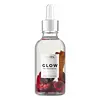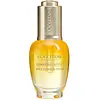What's inside
What's inside
 Key Ingredients
Key Ingredients

 Benefits
Benefits

 Concerns
Concerns

 Ingredients Side-by-side
Ingredients Side-by-side

Caprylic/Capric Triglyceride
MaskingHelianthus Annuus Seed Oil
EmollientOctyldodecanol
EmollientCoco-Caprylate/Caprate
EmollientSqualane
EmollientBorago Officinalis Seed Oil
EmollientHelichrysum Italicum Extract
AntiseborrhoeicHelichrysum Italicum Flower Oil
MaskingPrunus Armeniaca Kernel Oil
MaskingOenothera Biennis Oil
EmollientRosa Moschata Seed Oil
EmollientMyrtus Communis Oil
MaskingHippophae Rhamnoides Oil
EmollientCamelina Sativa Seed Oil
Skin ConditioningPelargonium Graveolens Oil
MaskingCitrus Aurantium Dulcis Oil
MaskingEchium Plantagineum Seed Oil
Skin ConditioningTocopherol
AntioxidantParfum
MaskingLimonene
PerfumingLinalool
PerfumingGeraniol
PerfumingCitronellol
PerfumingCitral
PerfumingCaprylic/Capric Triglyceride, Helianthus Annuus Seed Oil, Octyldodecanol, Coco-Caprylate/Caprate, Squalane, Borago Officinalis Seed Oil, Helichrysum Italicum Extract, Helichrysum Italicum Flower Oil, Prunus Armeniaca Kernel Oil, Oenothera Biennis Oil, Rosa Moschata Seed Oil, Myrtus Communis Oil, Hippophae Rhamnoides Oil, Camelina Sativa Seed Oil, Pelargonium Graveolens Oil, Citrus Aurantium Dulcis Oil, Echium Plantagineum Seed Oil, Tocopherol, Parfum, Limonene, Linalool, Geraniol, Citronellol, Citral
Ingredients Explained
These ingredients are found in both products.
Ingredients higher up in an ingredient list are typically present in a larger amount.
This ingredient is an emollient, solvent, and texture enhancer. It is considered a skin-softener by helping the skin prevent moisture loss.
It helps thicken a product's formula and makes it easier to spread by dissolving clumping compounds.
Caprylic Triglyceride is made by combining glycerin with coconut oil, forming a clear liquid.
While there is an assumption Caprylic Triglyceride can clog pores due to it being derived from coconut oil, there is no research supporting this.
Learn more about Caprylic/Capric TriglycerideTocopherol (also known as Vitamin E) is a common antioxidant used to help protect the skin from free-radicals and strengthen the skin barrier. It's also fat soluble - this means our skin is great at absorbing it.
Vitamin E also helps keep your natural skin lipids healthy. Your lipid skin barrier naturally consists of lipids, ceramides, and fatty acids. Vitamin E offers extra protection for your skin’s lipid barrier, keeping your skin healthy and nourished.
Another benefit is a bit of UV protection. Vitamin E helps reduce the damage caused by UVB rays. (It should not replace your sunscreen). Combining it with Vitamin C can decrease sunburned cells and hyperpigmentation after UV exposure.
You might have noticed Vitamin E + C often paired together. This is because it is great at stabilizing Vitamin C. Using the two together helps increase the effectiveness of both ingredients.
There are often claims that Vitamin E can reduce/prevent scarring, but these claims haven't been confirmed by scientific research.
Learn more about Tocopherol